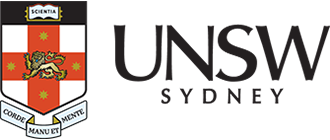Thermo Fisher Scientific Talos L120C S/TEM

Description
The Thermo Fisher Scientific Talos L120C is a low voltage transmission electron microscope (TEM) designed to suit a large variety of samples from the biological and soft matter and material applications. This versatile microscope excels at imaging beam sensitive samples with ultra large field of view and high sample throughput.
The instrument is easy to use with auto-alignments and an intuitive user interface making it accessible for both novice and expert users. The low voltage electron gun makes it particularly effective for imaging 2D cells, cell organelles, polymers, and soft materials. Utilising the high tilt holder makes this microscope ideal for tomography providing detailed 3D reconstructions of any material.
The microscope is integrated with an array of imaging software packages like MAPS, EPU, and Velox allowing for comprehensive imaging and data correlation with other imaging modalities such as fluorescence microscopy.This powerful, stable, and versatile system excels in delivering high-resolution 3D characterization of biological and biomaterial samples. It is particularly ideal for researchers in cell biology, structural biology, and nanotechnology. The Talos Arctica features advanced automation and high-throughput capabilities, including robotic sample handling and automated loading for up to 12 samples, enhancing data acquisition speed and efficiency. Additionally, it is sophisticated software suite supports a wide range of applications, from single-particle analysis to tomography, making it an inviable tool for researchers aiming to achieve detailed insights into the structure and function of complex biological systems.
Specifications
-
LaB6 thermionic electron gun 80-120 kV operating voltage
-
0.204 nm (lattice resolution) at 120kV
-
<1 nm (line resolution) at 120kV
-
- Thermo Fisher Scientific Ceta S 4k x 4k digital camera with speed enhancement and high sensitivity
- Thermo Fisher Scientific Flu Cam for alignment and high dynamic range imaging
- Fischione 3000 Annular Dark Field (ADF) STEM detector
- Thermo Fisher Scientific Panther segmented and brightfield (BF) STEM detectors
-
- 100 mm2 Bruker XFlash 6T XEDS detector >0.7 steradian.
-
- Fischione High Tilt Holder (± 80°) (for Tomography)
- Gatan 626 Cryo Holder
- TFS Single Tilt Holder
- TFS Double Tilt holder
- TFS Multi-Specimen Sample holder (accommodating up to 3 samples)
Applications
Nanoparticles for catalysis, nanomedicine
Metals and alloys
Structural Biology
Pathology
Polymer Science
Life Sciences
Biomaterials
Solar and battery materials
Earth sciences
Pathology and medical sciences
Cultural heritage materials
Planetology
Capabilities
-
- TEM of Soft Materials,
- TEM of Biological Sample,
- Beam Sensitive Materials
- Dark Field TEM (DF-TEM)
Electron Diffraction
Beam-sensitive materials
High-angle annular dark field STEM (HAADF)
Automatic acquisition and montage of large areas (MAPS)
Automatic acquisition of low dose images (EPU)
Elemental mapping
X-ray Energy Dispersive Spectroscopy (XEDS, EDS, EDX)
TEM & STEM tomography
Cryo-EM and cryo-ET.
In-situ movie capture
Low dose Exposure
Correlative Light Electron Microscopy (CLEM)
Publishing Microscopy Data Acquired on the Thermo Fisher Scientific Talos L120C
-
-
- Nanoparticle Drop-casting
- Chemical fixation, dehydration, critical point drying
- Mounting in resin
- Staining
- Ultramicrotomy
- TEM Grid details
-
- Manufacturer: Thermo Fisher Scientific
- Model: Talos L120C
- Type: LaB6
-
- Accelerating voltage (120 kV)
- Detector(s) used for imaging ( (BF, ABF, HAADF, STEM)
-
- Adjustments to contrast/brightness
-
- Scalebars can be added or removed from images in the export options.
Acknowledgement:
“The authors acknowledge the facilities and the scientific and technical assistance of Microscopy Australia at the Electron Microscope Unit (EMU) within the Mark Wainwright Analytical Centre (MWAC) at UNSW Sydney.”
Credit EMU staff: Feel free to mention EMU staff who have assisted you with your work! If staff have been involved with your work beyond basic training and support (e.g., project design, complex data/image processing, independent imaging/analysis, manuscript preparation), it may be appropriate to discuss co-authorship with the relevant staff and your supervisor.
Don’t forget to email the EMU lab manager with a copy of your publication to claim 2 hours of free microscopy time.
-
Instrument location
Electron Microscope Unit
B84, Basement
June Griffith Building (F10)
UNSW Sydney, NSW 2052
Access – To discuss training or how your project could benefit from using this microscope, please contact the EMU using the enquiries form or email EMUAdmin@unsw.edu.au




